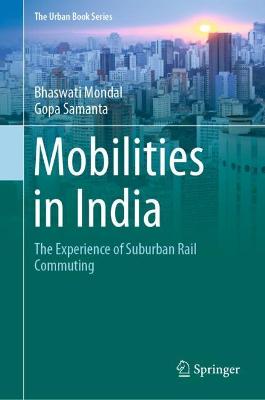The Urban Book
1 total work
This book presents commuting as a new paradigm in mobility studies in the context of global south. It delves into suburban train commuting in Eastern India. The book interprets commuting not only as a means to attend work but also as a process producing kinetic event-space infused with different mobile practices, which is not determined by their locational fixity, rather can be cognized. It analyses the role of suburban train commuting in the metropolitan expansion of Kolkata, and the transformation of rural space into urban. The significant contribution of the book lies in explaining commuters' experiencescape and the production of spatial fluidity in time capsule through commuting. It also explores the subjective reality of gendered commuting.
The book uses a trans-disciplinary research design, blending quantitative and ethnographic research methods. The area selected for the empirical research is the Howrah-Bardhaman Main Railway Line (108 km), the first suburban railway line in Eastern India. Commuters originating from three adjacent districts of Purba Bardhaman, Hooghly and Howrah took part in this research. Besides the commuters, non-commuting passengers and hawkers in the train were also interviewed to understand the diverse perceptions of the process of commuting. This book may be considered as a reference book for mobility studies, transport studies, urban geography and regional planning.
